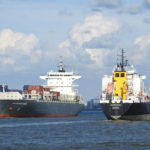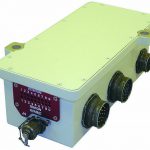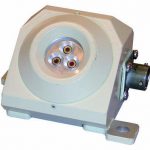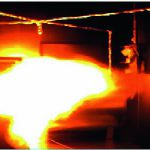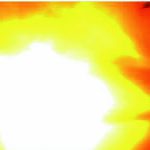Fire risks associated with specific spaces on board ships such as machinery rooms or galleys are well known. However, there are some issues to be addressed in designing and implementing systems for detection and suppression, as Martec is aware of
The reasons of fires in machinery rooms can be traced back to lack of maintenance or poor watch keeping practices[ds_preview] and are generally due to oil leakages hitting hot spots on engines, overheated components or electric welding without appropriate precautions. The engine room is the most critical area of potential fires on board. Statistics show that the origin of fires can be shared as 27 % in cargo spaces, 10 % in accommodation areas, and 63 % in engine rooms.
The most critical areas of hot surfaces in a diesel engine are: indicator valves, exhaust gas pipes from cylinders, exhaust manifold, turbochargers (flanges), and cut outs for measuring sensors. The direct costs of an engine room fire can be in the range of 1–4 mill. $ for a cargo and much more for a cruise vessel, plus off-hire and other costs that are difficult to estimate.
Statistics by classification societies show that a shipowner operating a fleet of 20 vessels can expect one major fire in the engine room every ten years. It is therefore clear that minimizing the effects of such dangerous situations requires fast acting and highly reliable systems able to detect and suppress promptly the fire.
The Italian company Martec has designed an Automatic Fire Sensing and Suppression System (AFSS) for marine applications, as a result of the experience accumulated in military vehicles which are exposed to significant risks of hydrocarbon destructive fires or explosions during their operational fires. In a military vehicle explosions may occur in the crew compartment when fuel or hydraulic pipes inside the vehicle are cut after piercing the armor. The liquid is turned into vapor and immediately ignited by high temperature surfaces resulting into an explosive fire. In this and other similar situations time of reaction is of essence and decisions cannot be left to human beings. The AFSS is able to detect a fire and activate high-speed solenoid valves in less than 15 ms. The extinguishing medium is released in the compartment by one or more suppressors in less than 100 ms. The explosion will be suppressed in less than 250 ms, corresponding more or less to a blink of the eye.
Martec’s AFSS consists of the following units:
• sensing element: tri-band flame detector;
• control unit;
• high rate extinguisher discharge valve.
Sensing element
The flame detector engineered by Martec is a tri-band infrared (IR) detector for hydrocarbon flames featuring an extremely fast response time. One IR channel monitors CO2 band peak and the other two channels the nearby IR bands. Other characteristics of the detector are:
• explosion response time < 2 ms (Navy- certified);
• built-in-self test;
• 90° cone field of view;
• designed with 45° oriented optics for easy installation;
• IP67 degree of protection;
• MIL standard qualified to shock, vibration, EMI;
• the operating temperature ranges from -40 °C to +120 °C.
Control unit
The control unit is a microprocessor-based digital electronic unit that can manage up to four independent protection zones, up to eight flame detectors and up to eight fire extinguishers. The control unit has built-in advanced diagnostic circuits with LED display for failure alarms. Its compact size, design and field configuration by a RS485 connector enables easy installation and commissioning.
Data are communicated to the integrated automation system through RS485 or Canbus interface enabling a full control and monitoring as an addressable fire detection system. Other technical characteristics of the control unit are:
• digital interface for external I/O;
• internal memory log file;
• IP67 degree of protection;
• MIL standard qualified to shock, vibration, EMI;
• the operating temperature ranges from -40 °C to + 70 °C.
A smaller version of the control unit, specifically designed when size is a constrain, is available. The smaller unit features the same performance of the bigger one and the main differences are:
• up to two explosion flame detectors and four temperature detectors;
• up to two extinguishers;
• up to two pre-warning and one alarm set point limit for each temperature detector.
High rate discharge valve
The high rate discharge valve is the actuator of the AFSS, responsible to activate the release of the extinguishing medium when a fire or explosion is detected. Particular care has been taken into the design and manufacturing of the parts in order to assure the highest level of availability requested for the application.
The valve is of the solenoid non-pyrotecnic type (non-explosive) having a service pressure of 70 bar at 20 °C or 105 bar at 70 °C. The valve diameter size is DN 32 mm and the opening time < 10 ms (Navy-certified). This means a discharge time in 100 ms with standard bottle. Other technical features of the high rate discharge valve are:
• external pressure gauge instrument;
• internal pressure switch for pressure and leakage monitoring;
• coil and pressure continous monitoring;
• IP67 degree of protection;
• temperature range from -40 °C to + 70 °C;
• available with and without mechanical override;
• low life-cycle cost due to easy reset after activation – no replacement parts needed.
As it can be seen from the above characteristics, particular care has been placed in the design and manufacturing of the system due to its criticality of application to safeguard human lives, assets and the environment.
One of the design guiding principles that have been followed is that of the safety life-cycle embracing all activities, such as:
• planning and analysis;
• engineering (design and front end);
• testing;
• commissioning;
• operation & maintenance;
• change management;
• de-commissioning.
Included in the safety life-cycle principle have been alternative methods of gauging the reliability and availability of the application through third-party validation and certification.
Much like the ISO 9000 series of quality standards, all life-cycle stages are extensively documented to maintain a clear safety requirements specification. In addition to this, response and suppression times have been recorded and validated during the tests using non-Halon, zero ODP (ozone depletion potential), one GWP (global warning potential) extinguishing agent, fully compliant with Montreal Protocol and F-gas European regulation.
The Martec AFSS represents a cost-effective solution to protect people in specific enclosed areas such as fuel pumps, diesel engines or purifiers – thanks to a number of advantages such as:
• rugged construction;
• reliable operation;
• ease of use and maintenance;
• design-to-cost solution;
• tested to meet the highest application requirements.
The AFSS is a central part of the integrated safety concept developed by Martec for the marine, naval and offshore markets that comprises:
• fire detection system;
• safety management & control system;
• damage control system with integrated ship stability calculator;
• decision support system;
• on-board people tracking system;
• patrol system;
• electronic incident board.






